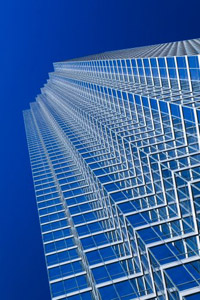 Don’t let your refurbishment get you hot under the collar
Don’t let your refurbishment get you hot under the collar
 When undertaking due diligence work, we often identify instances in which owners have carried out quality refurbishments that include foyers, floors and ceilings.
When undertaking due diligence work, we often identify instances in which owners have carried out quality refurbishments that include foyers, floors and ceilings.
While this certainly does help with the building’s maintenance and appearance, the refurbishment often overlooks a critical part of the equation: the air conditioning unit.
Air conditioners are a critical resource for buildings everywhere. Why is it then that they are so often overlooked? Many building owners do not consider the air conditioning unit to be particularly important in terms of refurbishment. Some owners do not even consider that air conditioning units would ever need to be refurbished. This however, is certainly not the case.
For most buildings, the air conditioning units were installed when the building was constructed. In some cases, this is as many as thirty years ago. As such, these air conditioning systems were designed to suit conditions relevant to the times when the building was originally constructed. For older buildings, this means that the air conditioning was designed to cater for factors that we consider common today such as computers, longer working hours and work station clusters.
Why is this a problem? Computers and body temperature each affect the general air flow required within a building. Consider a 10 storey building with a central air conditioning unit. It is likely that over a period of years, the number of employees within the building would have increased; the required electricity would have significantly increased; and the hours of work would most likely also be significantly greater.
 So you think you can’t afford it
So you think you can’t afford it
 A number of our articles have covered a variety of individual topics in isolation but in reality they’re all inextricably linked providing the platform for balance and maximum return from your property investments.
A number of our articles have covered a variety of individual topics in isolation but in reality they’re all inextricably linked providing the platform for balance and maximum return from your property investments.
Our affordability index provides an amalgamation of a variety of property information to provide a balanced look at how your asset might perform over a period of time and how you can influence that performance.
Whether the investment is residential or non residential the same basics apply –
§ How much is it going to cost me
§ What risks are involved
§ What return will I secure
These questions then have multiple layers – how much is it going to cost me initially and in the short and long term, what kind of costs are they, capital, repairs and maintenance, refurbishment or compliance costs. What must I do legally, what must I spend to benefit and retain the tenant.
